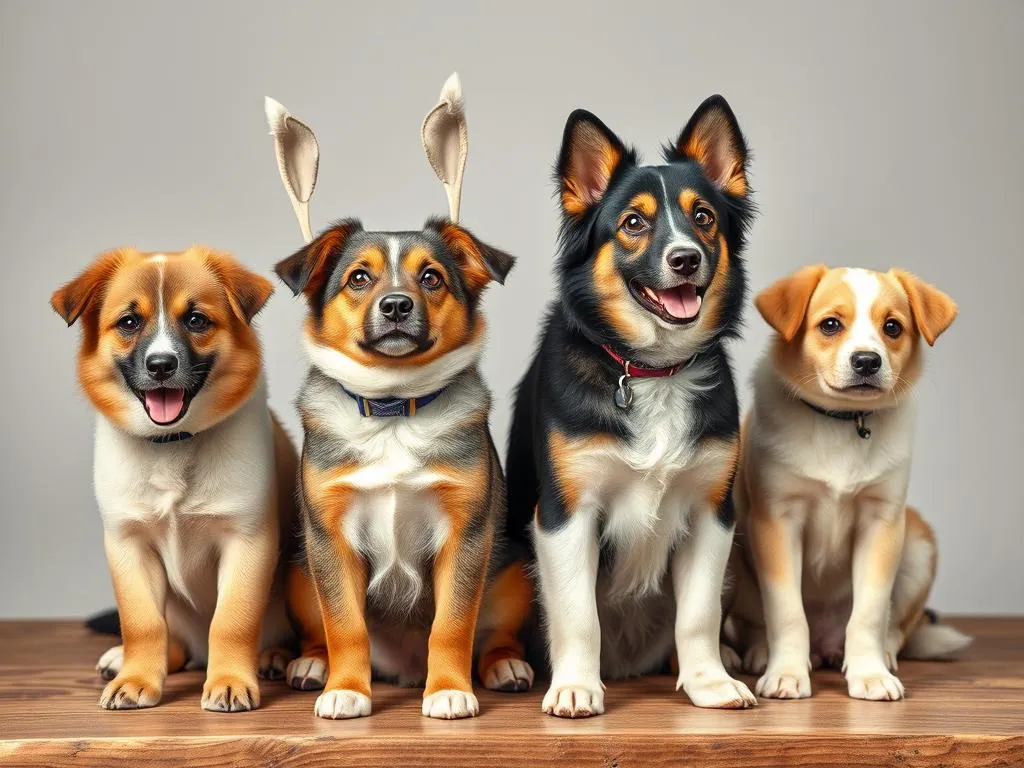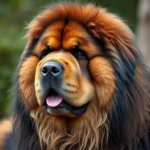
Introduction
When it comes to choosing a furry companion, understanding different dog breeds and their classifications is essential. The American Kennel Club (AKC) plays a significant role in this classification system, providing a framework that helps dog owners identify breeds based on their traits and characteristics. Among these classifications, the AKC Toy Group class holds a special place, primarily due to the unique attributes of toy breeds. These small yet spirited dogs are adored by many for their companionship and adaptability.
In this article, we will delve into the world of dog breeds in the AKC Toy Group class, exploring their characteristics, care requirements, and the joys of ownership. Whether you’re a potential dog owner or simply curious about these delightful companions, you’ll find valuable insights throughout.
Understanding the AKC Toy Group
What is the AKC Toy Group?
The AKC Toy Group is a classification that consists of small dog breeds that are primarily bred for companionship. These breeds typically weigh less than 20 pounds and are characterized by their playful and affectionate nature. Historically, toy breeds have been developed from larger breeds, often serving as lap dogs for nobility. As society evolved, these small dogs gained popularity among a broader audience, becoming cherished family pets.
Toy breeds are generally known for their charming personalities, intelligence, and adaptability, making them excellent companions for various lifestyles. They are often favored by individuals living in apartments or smaller homes due to their size and minimal exercise needs.
Importance of the Toy Group in Dog Breeds
The Toy Group is significant for several reasons. Firstly, these breeds are incredibly popular among dog owners, thanks to their compact size and affectionate demeanor. They are often ideal for families, seniors, and individuals who seek a devoted companion.
Owning a toy breed can come with numerous benefits. They typically require less space, making them suitable for urban living. Additionally, their friendly and playful nature means they can adapt well to various home environments. However, potential owners should consider their temperament, care requirements, and health considerations when selecting a breed.
Popular Dog Breeds in the AKC Toy Group
Overview of Popular Breeds
The AKC recognizes numerous breeds within the Toy Group, each with its own unique traits. Here’s a list of some popular toy breeds:
- Chihuahua
- Pomeranian
- Yorkshire Terrier
- Maltese
- Toy Poodle
Each of these breeds brings distinct characteristics to the table, contributing to their popularity among dog lovers.
Detailed Profiles of Selected Toy Breeds
Chihuahua
Physical characteristics: Chihuahuas are one of the smallest dog breeds, typically weighing between 2 to 6 pounds. They have a compact body, large expressive eyes, and either a smooth or long coat.
Temperament and personality: Known for their loyalty and boldness, Chihuahuas can be quite feisty despite their small size. They are often attached to their owners and may exhibit protective behaviors.
Care and grooming needs: Regular grooming is essential, especially for long-haired Chihuahuas. They require minimal exercise, but daily walks and playtime are necessary to keep them stimulated.
Health considerations: Common health issues include dental problems, patellar luxation, and heart disease. Regular veterinary check-ups are crucial for their overall health.
Pomeranian
Physical characteristics: Pomeranians weigh between 3 to 7 pounds and are known for their fluffy double coat and fox-like face. They come in various colors and have a lively appearance.
Temperament and personality: Pomeranians are playful, intelligent, and curious. They often exhibit a confident demeanor and can be quite vocal.
Care and grooming needs: Their thick coat requires regular grooming to prevent matting. Pomeranians enjoy playtime and need daily exercise to stay healthy.
Health considerations: Common health issues include hip dysplasia, dental problems, and skin allergies. Regular vet visits are essential for preventive care.
Yorkshire Terrier
Physical characteristics: Yorkshire Terriers, or Yorkies, typically weigh about 4 to 7 pounds. They have a long, silky coat that requires regular grooming.
Temperament and personality: Yorkies are known for their spirited and affectionate nature. They are intelligent and often form strong bonds with their owners.
Care and grooming needs: Daily grooming is necessary to maintain their luxurious coat. They also require moderate exercise through walks and playtime.
Health considerations: Common health issues include dental problems, tracheal collapse, and eye conditions. Regular veterinary care is vital for maintaining their health.
Maltese
Physical characteristics: The Maltese is a small breed weighing around 4 to 7 pounds, known for its long, flowing white coat. They have a charming appearance with dark, expressive eyes.
Temperament and personality: Maltese dogs are affectionate, playful, and gentle. They thrive on human interaction and are known for their friendly disposition.
Care and grooming needs: Their long coat requires daily grooming to prevent tangles and mats. Maltese dogs need regular exercise but can get sufficient activity indoors.
Health considerations: Common health issues include dental problems, eye conditions, and skin allergies. Regular vet visits are important for their overall well-being.
Toy Poodle
Physical characteristics: Toy Poodles weigh around 4 to 6 pounds and are known for their curly, hypoallergenic coat. They come in various colors and have a graceful appearance.
Temperament and personality: Toy Poodles are intelligent, eager to please, and highly trainable. They are social dogs that enjoy being around people and other pets.
Care and grooming needs: Regular grooming is necessary to maintain their coat, requiring professional grooming every few weeks. They also need daily exercise to stay physically and mentally stimulated.
Health considerations: Common health issues include hip dysplasia, eye disorders, and skin conditions. Regular veterinary care helps in early detection and treatment of health problems.
Comparative Analysis of Toy Breeds
The following chart compares some key characteristics of the dog breeds in the AKC Toy Group:
| Dog Breed | Weight Range (lbs) | Temperament | Grooming Needs | Exercise Needs |
|---|---|---|---|---|
| Chihuahua | 2 – 6 | Bold, Loyal | Moderate | Low |
| Pomeranian | 3 – 7 | Playful, Vocal | High | Moderate |
| Yorkshire Terrier | 4 – 7 | Spirited, Affectionate | High | Moderate |
| Maltese | 4 – 7 | Gentle, Affectionate | High | Low |
| Toy Poodle | 4 – 6 | Intelligent, Social | High | Moderate |
When choosing a toy breed, consider your lifestyle, home environment, and personal preferences. Each breed has unique traits that may align better with your living situation and daily routine.
Caring for Toy Breeds
General Care Requirements
Owning a toy breed comes with specific care requirements that every owner should be aware of:
-
Nutrition and feeding guidelines: High-quality dog food that meets their nutritional needs is crucial. Small breeds often benefit from multiple small meals throughout the day to maintain energy levels and prevent hypoglycemia.
-
Exercise needs and playtime recommendations: While toy breeds don’t require extensive exercise, daily walks and interactive playtime are essential for their physical and mental well-being.
-
Grooming practices specific to toy breeds: Regular grooming is necessary for most toy breeds, especially those with longer coats. This includes brushing, bathing, and nail trimming.
Health Considerations for Toy Breeds
Toy breeds can be prone to specific health issues that owners should be aware of:
-
Common health issues in toy breeds: Conditions like dental problems, patellar luxation, and heart disease are prevalent among toy breeds. Regular check-ups are essential for early detection.
-
Importance of regular veterinary check-ups: Routine vet visits can help catch health concerns early, ensuring your toy breed remains healthy and happy.
-
Preventive care and vaccinations tailored for toy breeds: Keeping up with vaccinations and preventive care, including flea and tick control, is vital for maintaining your dog’s health.
Training and Socialization
Training and socialization are critical aspects of raising a well-adjusted toy breed:
-
Best practices for training toy breeds: Positive reinforcement techniques work best for training toy breeds. They respond well to treats and praise, making training sessions enjoyable.
-
Socialization tips and techniques: Early socialization is essential. Introduce your toy breed to various people, environments, and other pets to help them develop a well-rounded personality.
-
Importance of early training and exposure to various environments: Exposing your toy breed to different situations during their formative months can help prevent behavioral issues and promote confidence.
Choosing the Right Toy Breed for You
Assessing Your Lifestyle
Before adopting a toy breed, consider the following questions:
- Do you have enough time to dedicate to training and socialization?
- What is your living situation—apartment or house?
- Are there small children or other pets in your home?
Understanding your lifestyle and living arrangement will help you determine which toy breed is the best fit for your family.
Adoption vs. Breeder
When deciding to bring a toy breed into your home, consider the following:
-
Pros and cons of adopting from a shelter vs. purchasing from a breeder: Adoption can be a fulfilling experience, providing a home to a dog in need. However, purchasing from a reputable breeder may offer specific breed traits and health guarantees.
-
How to find reputable breeders and shelters: Research local shelters and breeders, read reviews, and ask for references. Ensure they prioritize the health and well-being of their dogs.
-
Importance of breed-specific rescues: Many breed-specific rescues focus on toy breeds, which can be a great resource for potential owners looking to adopt.
Conclusion
The AKC Toy Group is home to some of the most beloved dog breeds, each with unique traits and personalities. These small companions offer joy, love, and loyalty to their owners. By understanding the characteristics, care needs, and health considerations of toy breeds, you can make an informed decision about welcoming one into your home.
Owning a toy breed can be a rewarding experience, filled with companionship and happiness. As you explore the possibility of bringing a toy breed into your life, remember to research thoroughly and consider adopting from shelters or breed-specific rescues. The joy of having a toy breed as part of your family is truly unmatched.
This article provides an extensive overview of dog breeds in the AKC Toy Group class, ensuring that all relevant aspects are covered while maintaining a focus on reader engagement and SEO optimization.









